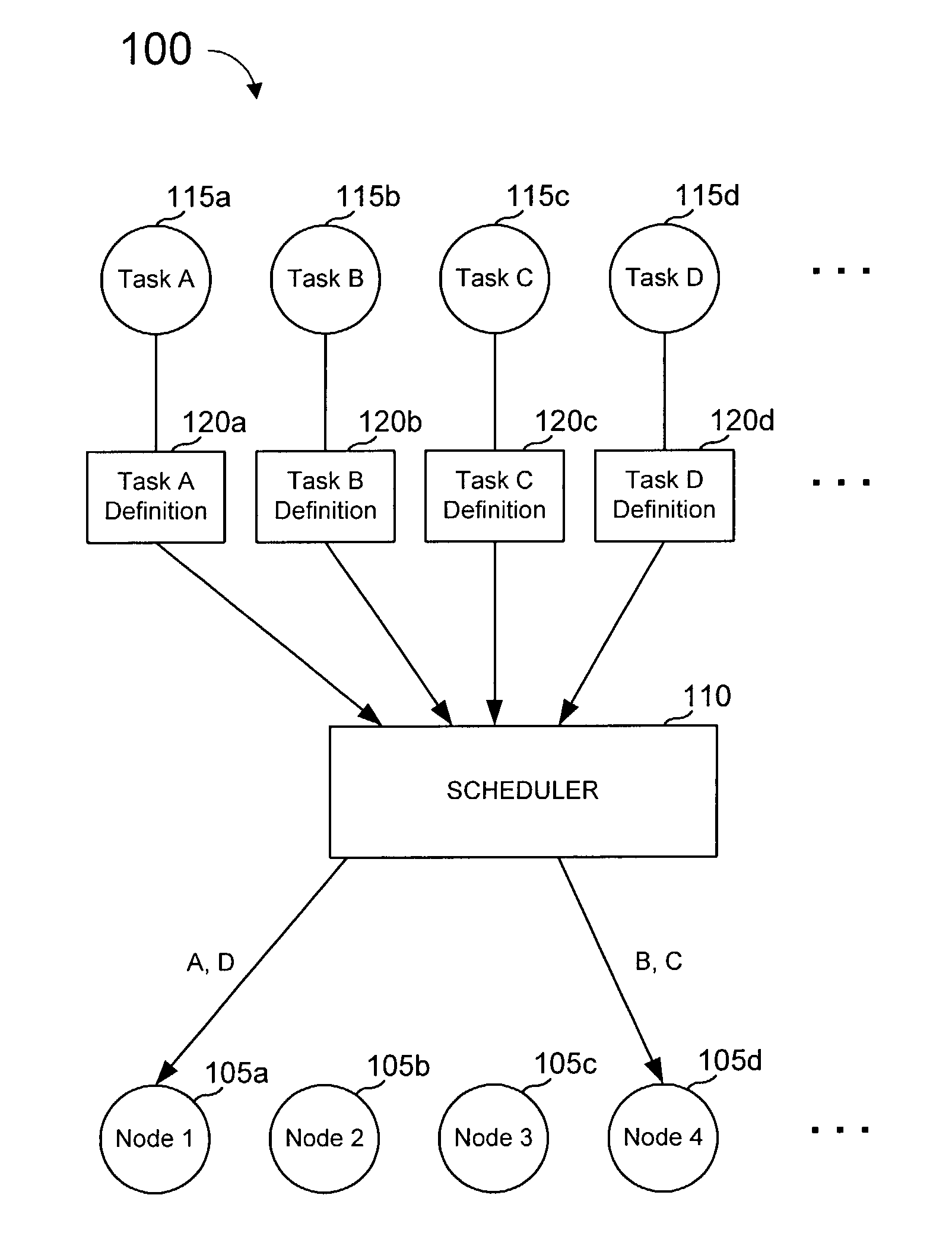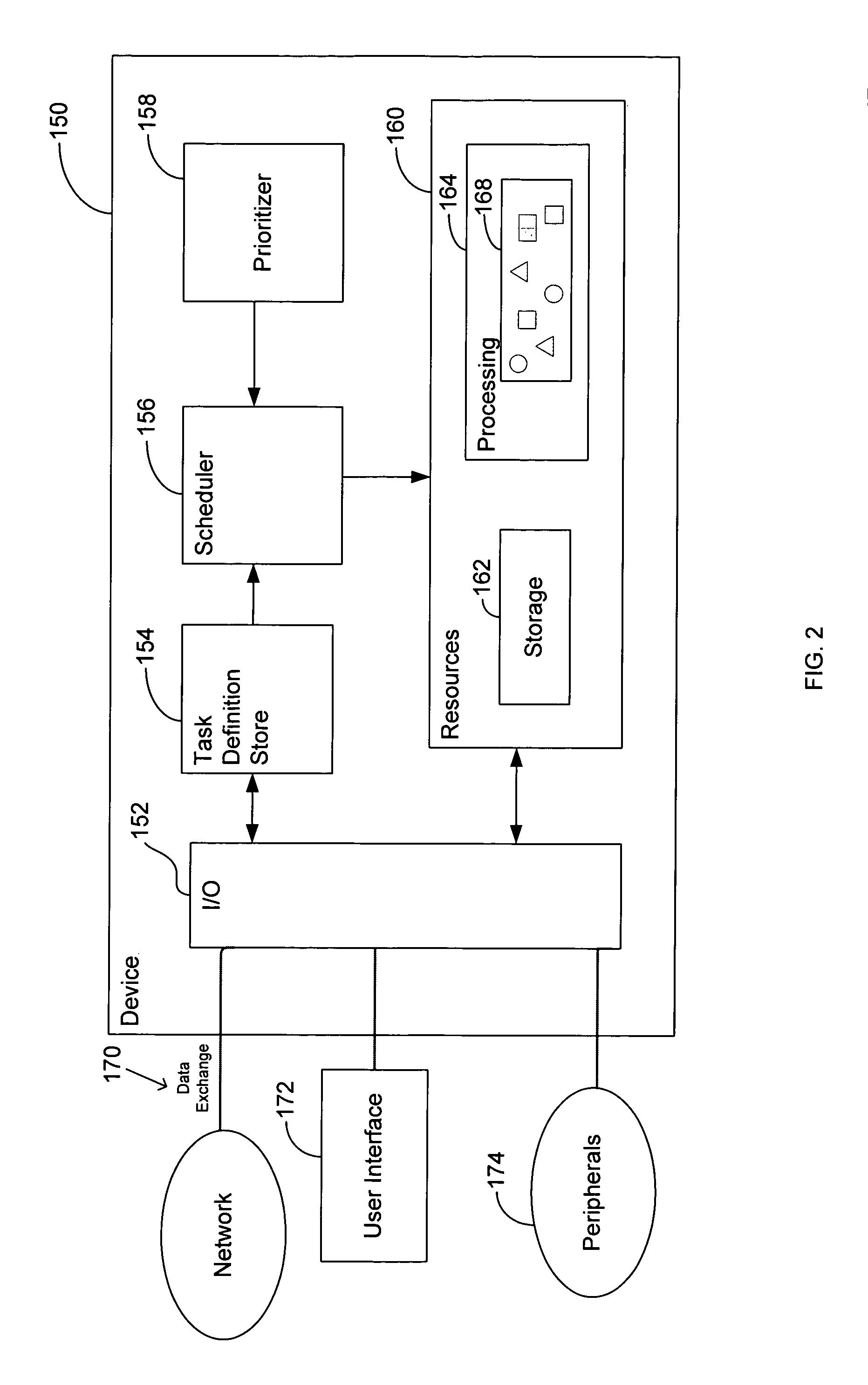Task definition for specifying resource requirements
a resource requirement and task technology, applied in the field of digital processing systems, can solve the problems of difficult to add new configurations to a device, not easily modifiable or extendable, and limited system configurations
- Summary
- Abstract
- Description
- Claims
- Application Information
AI Technical Summary
Problems solved by technology
Method used
Image
Examples
examples
[0054]Examples of source code for implementing task definitions will now be described. It is to be understood that these examples are merely illustrative and are not limiting.
[0055]A. Module Definition
[0056]In some embodiments in which a task can comprise one or more modules, a task definition includes a module definition section. An example of source code included within a module definition section is provided below. In this example, a module definition section begins with a name indicating the module to be defined, followed by parentheses and brackets:
[0057]
modSample(“modSample_EntryPoint”, “m_node_files / modSample.mlf”) {...}
[0058]In the above example, a filename of an executable image of the module and an entry point within the file are specified within the parentheses. In particular, the filename of an executable images is “modSample.mlf” located in the directory “m_node_files.” Additionally, the entry point is “modSample_EntryPoint.” Within the brackets, other requirements of t...
PUM
 Login to View More
Login to View More Abstract
Description
Claims
Application Information
 Login to View More
Login to View More - R&D
- Intellectual Property
- Life Sciences
- Materials
- Tech Scout
- Unparalleled Data Quality
- Higher Quality Content
- 60% Fewer Hallucinations
Browse by: Latest US Patents, China's latest patents, Technical Efficacy Thesaurus, Application Domain, Technology Topic, Popular Technical Reports.
© 2025 PatSnap. All rights reserved.Legal|Privacy policy|Modern Slavery Act Transparency Statement|Sitemap|About US| Contact US: help@patsnap.com



